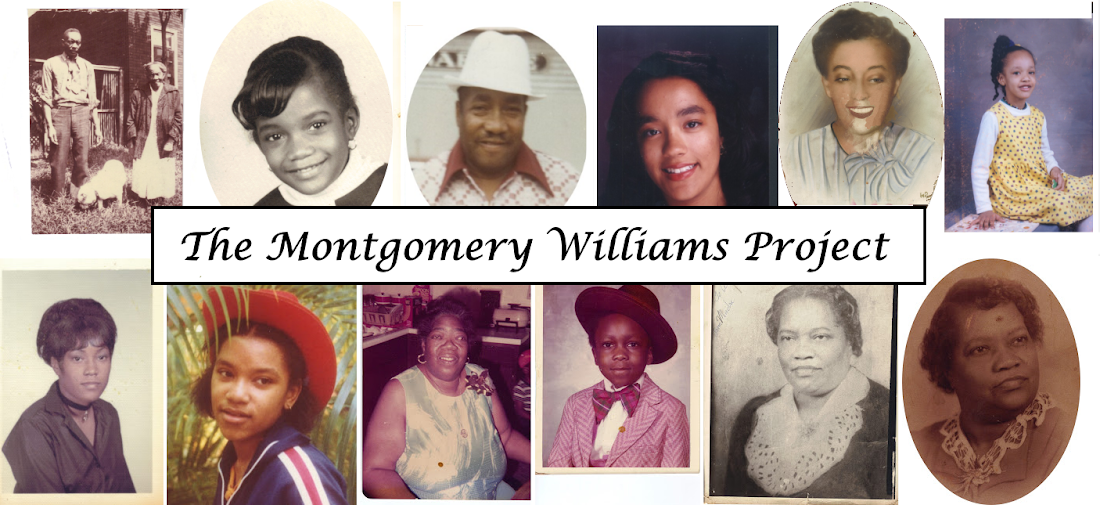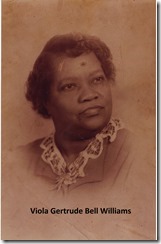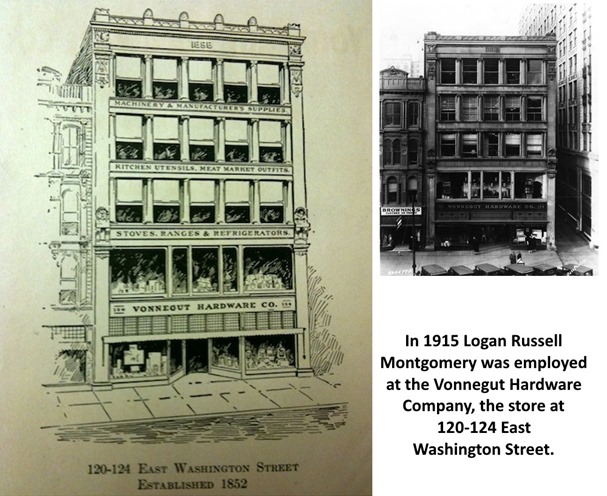It almost sounds like a 1940 film plot or a country western lyric, but there is a mystery afoot.
On Christmas day I explained to Jodi and Jimmy that according to the information provided on the family it looked like Logan Russell Montgomery, born a slave, had (as I understood it) purchased his mother out of indentured servitude following the civil war and the 13th Amendment.
Under Jim Crow laws indentured servitude, via tenant and servitude contracts, were used to contain and restrict the freedoms of freed slaves in many states.
In the case of Russell's mother, Darkas Montgomery, the record* of him purchasing her contract has led earlier researchers to conclude that the seller of the contract, Ermine Montgomery, was the owner of Darkas's contract after the death of Ermine's husband Robert Montgomery. The sale of the contract by Ermine has led the same researchers to assume that she was white, and therefore the wife of Robert Montgomery(deceased), the original slave owner of Russell and Darkas. Robert also is believed to be the father of Russell.
The assumption is that Ermine must be white in order to own a contract (under Jim Crow Laws) of a former slave, but this assumption is risky when you consider that in Kentucky, under slavery, there were freed blacks who owned slaves!
Kentucky, by comparison, was one of the more liberal of the slave states before the war with no prohibitions against Slaves learning to read and write and freed slaves having some property rights. Remember, even though a slave state Kentucky did not choose to succeed from the Union and actually fought on the northern side during the war.
The above information was the focus of that Christmas Day discussion with Jodi and Jimmy.
But...
As if all of the above was not enough, I discovered a marriage certificate for Russell to Sarah E. Miller. The marriage certificate indicated that the wedding was performed at the house of ERMINE MONTGOMERY! Present at the wedding was Russell and the 16 year old bride, the brides mother, a Parish Montgomery (surety for the marriage bond), Ermine, and two witnesses (names unreadable).

The marriage certificate for Russell to Sarah E. Miller. The marriage certificate indicated that the wedding was performed at the house of Ermine Montgomery. Present at the wedding was Russell and the 16 year old bride, the brides mother, a Parish Montgomery (surety for the marriage bond), Ermine, and two witnesses (names unreadable).
Would the former slave owner, Ermine, be so generous to the former slave(Russell), and illegitimate son of her late husband(Robert), as to host the wedding ceremony of that former slave 12 years after the end of slavery?
Was Ermine white? If so was she the wife of Robert Montgomery? The entire basis for the identification of Ermine as the possible white wife of Robert Montgomery appears to be the indentured servant contract sale.*
There is a problem with the assumptions associated with the contract. The acceptance of those assumptions are suspicious when the marriage license is looked at independent of the contract. In other words examining the marriage license we would conclude that all members of the wedding party, including Ermine, were black. The contract not withstanding, we should conclude that Ermine was neither white or the wife of Robert Montgomery. Nothing in the contract information* actually disputes or establishes that conclusion.
*(the existence of which I haven't been able to verify yet)
Yesterday, January 3rd, 2017 on a research trip to the Indiana State Library I obtained/discovered some additional documents:
- In the marriage record book for Adair County, Kentucky I found a listing for the marriage of Milton Montgomery(age 38, farmer) to Ermine Smith(age 25) dated 1874. Three years before the indentured servant contract. The page in the marriage book had the handwritten title "Adair Colored List"
- Pre-civil war Census records for Adair County, Kentucky. Having never done a search or research on pre-Civil War slaves I for now have stuck with doing what's familiar and tried to locate Robert Montgomery, slave owner.
The marriage record for the marriage of Ermine Smith to Milton Montgomery reinforces our new conclusion that Ermine was not white. In obtaining census records for 1850, 1860, and 1870. We are able to identify, not only who Robert's wife was, but we are also able to establish a connection of Darkas to Robert Montgomery:
From these three census we are able to establish two Robert Montgomery families in Adair county: one extended family in second district; and one in the first district.
- From the 1850 census the family in the second district is headed by Robert and C.S. Montgomery. By 1860 Robert is deceased and the family is now consolidated, some children have moved out, and the family is headed by the widow Clementine (C.S.) Montgomery. There is no information other than the surname to suggest a connection between this Robert Montgomery family and Darkas and Russell Montgomery.
- The family in the first district is headed by Robert and Elizabeth Montgomery on the 1860 census. Child Martha D.(age 32) and Jane(age 53), probably a sister of Robert.
From this information we are unable to establish either as the Robert Montgomery we are looking for. We may even start to question either Robert’s parentage or his identified date of death(after 1860) because we find a James Montgomery. This James appears on the 1860 census with his family. If either Robert is the father of this James (and Darkas’ son) has he relocated to Robert’s estate, or has he moved Darkas, a freed slave, to his 1860 estate. Which he occupied while both Robert’s were still alive.
It is more likely that Robert was dead before 1860.
The absence of proof is not proof. Because I can’t identify or find a connection to Robert that verifies the conclusions of earlier researchers doesn’t mean they are wrong. They may have had proof, shared the information from the proof, but not shared information about the proof. While I may now question the identification of Robert as the father of Logan Russell Montgomery or his date of death we will respect the conclusion of earlier researchers for now. we need copies or source information on the indentured servant contract and the birth record of Logan to clear this up.
Here is where the 1870 census gets interesting. Next door to the Montgomery family(white) is the black family of, none other than... Darkas Montgomery! Besides being neighbors, there is in the white household a son, Logan Russell Montgomery, and in the black household a son, Russell Montgomery. James and Darkas are the same age...hmmm.
NOTE: Under slavery Darkas would not have appeared on any census.
One last footnote to the 1870 census. Remember Russell Montgomery and Sarah Miller are married at the household of Ermine Montgomery (formerly Smith). Next door to Darkas is another black family of 5. The family of Robert Smith.
- From the above information I would suggest that these previous assumptions should now be considered inconclusive or no longer accurate: Ermine Montgomery was not white or the wife of Robert Montgomery. The servitude contract needs to be found and further researched.
- I believe from the above information we can conclude the following to be true: Darkas and her children where former slaves owned by the family of Robert and Elizabeth Montgomery, but that the records previously used to establish Robert as the father of Russell needs to be rediscovered. That in 1870 Darkas (not Russell) were under a indentured servitude contract, farming on the land of the late Robert Montgomery (now owned by the son James). That Ermine Smith married Milton Montgomery (both former slaves) in 1874. That Ermine hosted the wedding of Russell and Sarah. That somehow Ermine obtained the indentured servant contract of Darkas, either for or from Russell. We need a date for the transfer of the contract also.
The mystery continues...
**UPDATE: 1880 Census information sheds new light on the family of Martha Montgomery. Speculation above about the make-up and relationship of Martha and James Montgomery is disputed and clarified by the 1880 census. Previous to 1880 census information listed members of the household as follows: the head of household, followed by everyone in the household arranged by age, with no reference to the relationship of the members in the household. This too often leaves the researcher to try and deduct the relationship of the household members. Beginning on the 1880 census a column was added for the census taker to indicate the relationship:

Household # 177 is the family headed by James Montgomery, white, male, 52 years old father, occupation is farming. below him is everyone else in the household, of the same name, their race, sex, and age. Martha (M.D.) is identified as wife of James and is keeping house. 2 sons are involved in farming.
Household #178, still next door to the white family of James and Martha is Darkas Montgomery, mulatto, female, age 52, head of household/mother, keeping house. With her is Joseph, mulatto, male, age 18, son of Darkas/head, and he is farming, Russell now grown is not in the household.
In doing family research every new piece of information creates a new mystery to be solved and subsequently the need for further investigation.
Who is who in this post:
- Russell Montgomery married Sarah E. Miller in 1877.
- Logan & Sarah are the grandparents of Myrtle E. Montgomery.
- Darkas Montgomery would be her great-grandmother.
- Robert is thought to be the slave owner, white father of Russell Montgomery. Whatever happened to Robert and his wife we do not know, but we believe that James M. Montgomery is his son/heir living next to Darkas on the 1880 census.
- Ermine Montgomery was once thought to be the white wife of the slave owner Robert Montgomery. We now know she was African-American, probably connected to Russell and Darkas by blood or marriage and was involved in the indentured contract matter in some other way.
- James F. & Myrtle (Montgomery) Williams are the focal point of this project.























 James Frances Williams family lived:
James Frances Williams family lived: 
















 To view the Williams Montgomery Family map click this link:
To view the Williams Montgomery Family map click this link:
